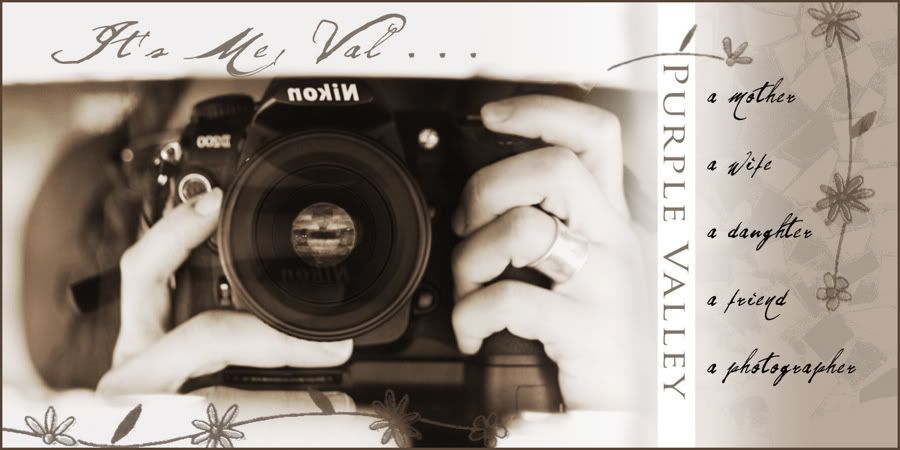12 essential photography rules.
Suddenly I am all about helping you guys, my friends (and my lurkers, I suppose I'll help you, too), take better photos, store photos better, etc. Here are tips, which I didn't make up, but which I found very helpful, which may help you also. If you have a DSLR with manual settings, these should really be helpful. Some may be way over your head, some may not, but if you find just one useful, it will make me happy.
I'm all about making people happy with a photograph I take. Why not help make you happy with the results of the photos you take. Ultimately you will take 95% of the photos you own, so why not improve so you'll have perfection to pass on to your kids and their kids. But wait, before you can pass them on, you have to save them, and even more important, PRINT THEM. Again, another post which will come later . . .
The tips, all borrowed from Pop Photo (and all great in my opinion!):
12 essential facts, formulas, and photographic rules
What happens when your systems go belly-up, when all of that cutting-edge technology dies and you must rely on (gasp!) your own knowledge? It pays to have these basics in your head. They can get you out of a jam and help you get good shots when nothing else will.
1. Sunny 16 rule -- The basic exposure for an average scene taken on a bright, sunny day is f/16 at a shutter speed equivalent to one over the ISO setting—that is, f/16 at 1/100 sec at ISO 100. From this you can interpolate, and try f/22 at the beach, f/11 on a cloudy-bright day, etc.
2. Moony 11, 8, and 5.6 rules -- There are many different rules that work well when shooting the moon. One favorite for a proper exposure of a full moon is f/11 at one over the ISO setting. For pictures of a half moon, use the same shutter speed at f/8, and for a quarter moon, use the same shutter speed at f/5.6.
3. Camera shake rule -- The slowest shutter speed at which you can safely handhold a camera is one over the focal length of the lens in use. As shutter speeds get slower, camera shake is likely to result in an increasing loss of sharpness. So, if you're using a 50mm lens, shoot at 1/60 sec or faster. Not enough light? Use a flash, tripod, or brace your camera against a solid object. (Val's comment: I've had great results from 1/30 even. I learned in school to never shoot at under 1/30 without a tri-pod or flash.)
4. Anatomical gray card -- Metering off an 18-percent neutral gray card is a good way to get a midtone reading that will give you a good overall exposure of a scene. Forgot your gray card? Hold your open hand up so it's facing the light, take a reading off your palm, open up one stop, and shoot. (Various skin tones rarely account for even a full-stop difference.)
5. Depth of field rules -- When focusing on a deep subject, focus on a point about a third of the way into the picture to maximize depth of field, because the depth-of-field zone behind that point is about twice as deep as the depth-of-field zone in front of it. This works for all apertures and focal lengths, but the smaller the aperture and the shorter the focal length, and the greater the distance you shoot at, the greater the depth of field.
6. Largest digital print rule -- To calculate in inches the largest photo-quality print you can make with a digital camera, divide the vertical and horizontal pixel counts (see your manual) by 200. For critical applications, or if you want exhibition-quality prints, divide the pixel counts by 250. (Val's comment: this is a really insightful point!)
7. Exposure rules -- The classic advice is, "Expose for the highlights, and let the shadows take care of themselves." This works with slide film and digital. But with negative film, especially color negative, you're better off overexposing by one stop.
8. Quick flash-fill rule -- When using an automatic flash unit that doesn't provide auto flash-fill ratios, set the flash's ISO dial to twice the ISO you're using. Meter the scene, select an f-stop, set the autoflash aperture to the same f-stop, and shoot. The resulting 2:1 flash-fill ratio will produce filled shadows one stop darker than the main subject.
9. Flash range rule -- Want to know how much extra flash range you get by going to a faster ISO? The rule is, "Double the distance, four times the speed." For example: If your flash is good to 20 feet at ISO 100 (film or digital), it will be good to 40 feet at ISO 400.
10. Megapixel multiplier rule -- To double the resolution in a digital camera, you must increase the number of megapixels by a factor of four—not two. Why? The number of pixels in both the vertical and horizontal dimensions must be doubled to double the pixel density across the image sensor.
11. Action-stopping rules -- To stop action moving across the frame that's perpendicular to the lens axis, you need shutter speeds two stops faster than action moving toward or away from you. For action moving at a 45-degree angle to the lens axis, you can use a shutter speed one stop slower. For example: If a person running toward you at moderate speed can be stopped at 1/125 sec, you'll need a shutter speed of 1/500 sec to stop the subject moving across the frame, and a shutter speed of 1/250 sec to stop him if moving obliquely with respect to the camera. (Val's advice: Just have it set at 1/250 or over with action shots and you should almost always capture the action in freeze-frame.)
12. Sunset rule -- To get a properly exposed sunset, meter the area directly above the sun (without including the sun). If you want the scene to look like it's a half-hour later, stop down by one f-stop, or set exposure compensation to minus one.
Happy day to you! Now go and shoot some great photos then bring them back and show me! :c)













4 comments:
Great tips. I will have to print out and keep. How about you start a training session for Photoshop. I want to know how to use but don't have the time. Nevermind I'll e-mail you later.
Those will be great tips once I get a camera that has all of those fun gadgets and things. Right now we are using an HP that Chris's boss gave us for a wedding present (yeah, we've been married for almost 6 years). It was top of the line when he bought it for us with it's 2.1 MP. Now that technology has been on the move...not so much! I am saving my credit card points for a more awesome camera. I'm sure you will agree since it's just like yours...Alexis sent me over the edge on wanting it with her post. Hopefully I will have enough points saved by the time the baby is born. Fingers crossed!
I wish I'd read this post before we went to the park this evening. If you go to my blog you can see my little photo collage. Some of the pictures turned out quite nice. Great tips.
Great tips Val. Thanks a lot.
I'm going to get to my blog today...it's still plain, but yea I will have to play around some more.
Post a Comment